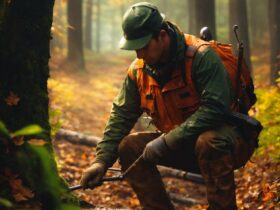Foraging for food in the forest can be a useful skill in a survival situation or just a fun way to connect with nature. There are many edible plants and fungi that can be found in the woods, and knowing which ones are safe to eat can be crucial. Here are the top 10 survival foods to forage in the forest.
1. Berries – Many types of berries can be found in the forest, such as blackberries, raspberries, blueberries, and elderberries. These are not only delicious but also high in vitamins and antioxidants.
2. Nuts – Look for nuts like acorns, walnuts, chestnuts, and hazelnuts. Nuts are high in protein and healthy fats, making them an excellent source of energy.
3. Wild greens – There are many edible greens that can be found in the forest, such as dandelion, nettles, and plantain. These are packed with vitamins and minerals and can be eaten raw or cooked.
4. Mushrooms – While not all mushrooms are safe to eat, there are several varieties that are edible, such as chanterelles, morels, and oyster mushrooms. Be sure to educate yourself on which mushrooms are safe to consume.
5. Pine needles – Pine needles can be steeped in hot water to make a vitamin C-rich tea. This can be a great way to boost your immune system in a survival situation.
6. Cattails – Cattails are a versatile plant that can be found near water sources. The young shoots can be eaten raw or cooked, and the root can be ground into a flour.
7. Acorns – Acorns can be ground into a flour and used to make bread or porridge. They can also be leached to remove the bitter tannins and eaten as a nut.
8. Rose hips – These bright red fruits are high in vitamin C and can be eaten raw or made into a tea.
9. Wild onions and garlic – Look for wild onions and garlic in the forest, as these can add flavor to your foraged meals and are also known for their antiviral and antibacterial properties.
10. Wild game – While not technically a foraged food, hunting for wild game such as rabbits, squirrels, or birds can provide a source of protein in a survival situation.
When foraging for food in the forest, it’s important to properly identify each plant and be cautious of any potential dangers. It’s also a good idea to bring along a field guide or consult with an expert to ensure that the plants you gather are safe to eat. With the right knowledge, foraging can be a rewarding way to find food in the wild.





Leave a Reply